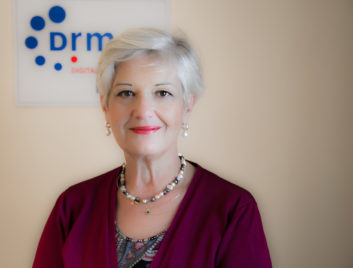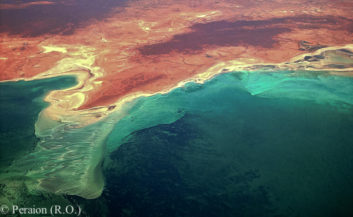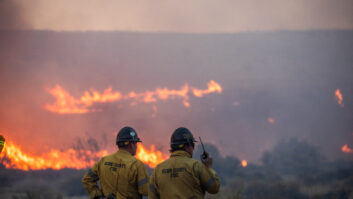The author is chairman of Digital Radio Mondiale.
The image of a lonely kangaroo against the orange sky of the burning Australian bush must have been seen by billions of people over the last few weeks. Yet, this is just one of the many disasters ushering in the new year. Let us not forget about the floods and earthquakes in Indonesia, the earthquakes in Puerto Rico, the first cyclones in Asia.

The increasing number of these disasters can challenge governments and authorities more often and for longer everywhere not just in Asia. And when a disaster strikes communication is of the essence.
Australian public broadcaster ABC has been rightly praised for its national emergency broadcasts these last few weeks. ABC’s “excellent job” in providing emergency information (as mentioned by the Minister of Communications) raises issues many public broadcasters and some commercial station are facing the world over.
How do they maintain proper and frequent disaster warnings that are able to reach everyone, even citizens in rural and less populated areas, and sometimes over many days and nights? And how can they fund all this “extra effort”? These broadcasts seem essential during emergencies but then they quickly drop to the bottom of the priorities’ list when the rain returns or the last cameraman has packed and gone to cover another more urgent story.
COVERING LARGE, TARGETED AREAS

Using analog broadcasting in emergencies is an old but often “alert-all” blunt instrument. If medium wave or shortwave are used in local or regional emergencies, the broadcast messages might also reach and alarm people in faraway regions who do not need to worry (yet). When disasters strike, cell towers, internet provision and FM transmitters are often immediately affected. Cell, radio or TV towers are often mounted on the highest location to give largest coverage. Electricity might be also impacted at transmission and sometimes at studio level, even if a generator is used.
A neater solution is to use a transmitter, a digital AM one, situated outside the danger area. One such AM transmitter could have helped the Australians. A DRM AM transmitter can support long-distance Emergency Warning Functionality (EWF) coverage from outside the disaster area being received just in the concerned area.
In emergency situations an explicit alarm signal is sent to receivers indicating where to find the actual emergency program and, if the rightly equipped receiver is used, the receiver will be even “woken up” if in standby mode (but not switched off). Does this sound so fanciful? Not more than talking to your smart speaker.
Then the DRM receiver becomes a smart radio activated not by the listener’s voice but by the transmitter, which has received the right information or files from the broadcaster linked to the emergency authority along a well-established path.
It’s possible to insert the emergency message for the target area quickly, while, for other unaffected regions, the regular programs continue unchanged. In other words, the technology exists for EWF localization but the planning and setting up of the transmission chain from the first message, map, telephone number to the listener needs human intervention that links the relevant authorities to the broadcaster etc. DRM has demonstrated how this can work (e.g. India, Bangladesh etc.), showing how inserting the necessary files alongside or instead of the audio file can be quickly implemented in a normal newsroom on a laptop.
The DRM AM digital audio broadcasting standard provides flexibility and also carries extra information that can be displayed on the car radio or standalone screens without flattening batteries as quickly as with cellular phones.
A map or an address, a clear instruction in your mother tongue or in several can save lives. And what is useful for many can become vital for people with hearing impairments, for example.
How about the thousands of FM transmitters in emergencies, if they are still up? Just turning them into emergency loudspeakers (no maps, or written instructions in analog) can be quite daunting, especially if the task needs to be completed fast and by staff who might not always be available.
All major digital radio standards have some disaster warning feature provision. Using one content server, one box, to feed several DRM for FM transmitters can be a quick solution and Indonesia is imaginatively trying to implement this very solution this year.
According to the Technology and New Media director of RRI, the Indonesian public radio, Mr. R. Ginging, “RRI is currently installing five DRM-FM transmitters in five cities. The five transmitters are equipped with an early warning system. If this technology runs well, we hope that in the future Indonesia can establish DRM as the national digital broadcasting standard.”
BUDGETS FOR EMERGENCIES
Emergency broadcasting is seldom a line in any broadcaster’s annual plan and it comes out of the base funding, as is the case with ABC in Australia. And when budgets are being cut, asking for potential emergency broadcasting money can sound extravagant.
Therefore, turning to digital radio is not just about being “on trend” about more channels or pop princesses’ pictures on screen. It’s not even about getting significant electricity and spectrum savings (in DRM of up to 80%). It’s about building emergency warning capability that is always available, at no extra cost (once properly planned and installed and with the receiver industry on board). This also delivers the extra benefit of localization, whether of regular content or of emergency warnings.
The Emergency Warning Functionality is one of the great benefits of digital radio like DRM. But we need to continue to demonstrate this potential and bring it to the attention of governments and accountants — digital radio can save lives and money, leaving nobody behind.






